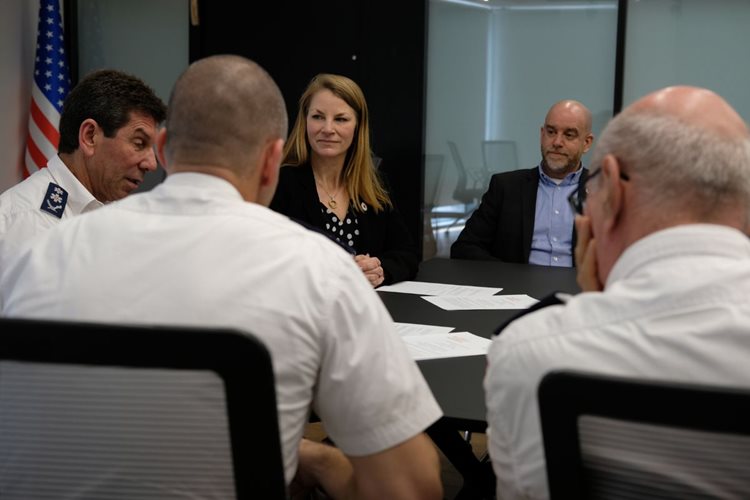During a recent trip to meet with the leadership of Magen David Adom (MDA) – the Red Cross of Israel – we spoke about the incredible power of volunteers. Like in Canada, the work done by MDA is made possible by the staff and volunteers who give of their time, even in incredibly difficult circumstances.
MDA has a network of 34,000 volunteers, nearly a third of whom are under the age of 18. You can find them in all areas of MDA’s work, including working in ambulances alongside staff, as they have the same level of training.

Photo: Angela Hill / Canadian Red Cross
We met these teams first-hand during a trip to Kiryat Shmona in northern Israel, an area where a nearly year-long, conflict-related evacuation order had just been lifted. The emergency services workers who stayed behind while their families left talked about what it was like to stay and provide support to others who didn’t evacuate.
Insights from Paramedics with the Magen David Adom
“We know we need to do our best, but on the other side we know we are at risk,” said Omri Hochman, head of the Kiryat Shmona branch, about possible air strikes that have escalated since the devastating attacks of Oct. 7. One of the medics on his team, Eli, had his house destroyed while on shift. Fortunately, no one was inside. He found a new place to stay and kept working.
“Eli and other employees, they know that if they don’t come here, nobody else would,” Omri said.
Oriyna Danino, another medic, started volunteering because her father is also a paramedic with MDA. She talked about what it was like being in Kiryat Shmona during the evacuation.
“Before it was a vibrant city, now, a silence you cannot imagine,” she said. Even with the evacuation order lifted, not everyone has returned. She said her family was worried about her, but she would put emotion to the side to help people in need.
Working with Communities to Build Emergency Capacity
In preparation for future crises, including natural disasters, MDA is working with communities to build emergency capacity in case help is delayed. The community emergency response project is designed to provide tools including medical equipment and training to communities so they can respond internally until help arrives.It does more than help with medical training, said Uri Shacham, chief of staff for MDA. “It also builds their resilience. Because at the end of the day a community knows, regardless of what happens … they have the capacity to respond on their own.”
The community members we met during the visit spoke about the importance of being ready to help one another in case of emergency. They are committed to the project and take pride in the ability to support their community.
“The community is feeling that we are ready, just in case something would happen, they know where we are located, that we have the equipment, and we are ready to assist them. They know they can count on us,” said Eitan Twito, one of the community volunteers.
The Canadian Red Cross supports the work of MDA’s ambulance operations and the work to set up the community response teams. The Canadian Red Cross has a long history of working with MDA to share technical capacities in preparation for future emergencies.

